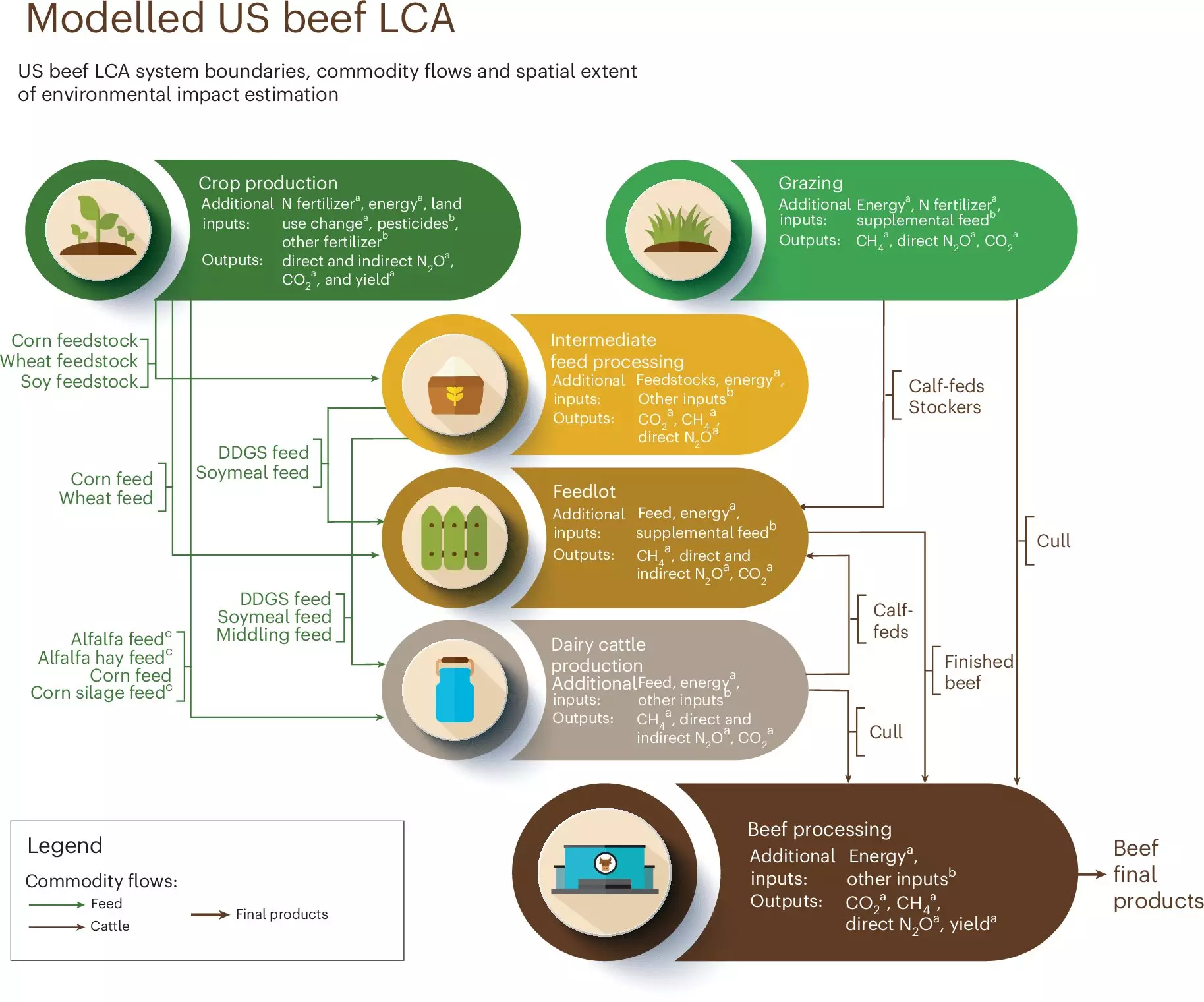The escalating concern over climate change is largely linked to human activities, with the agricultural sector being a significant contributor. Greenhouse gases, primarily emitted from farming practices, have profoundly influenced global warming trends since the mid-20th century. Among various agricultural practices, the beef industry stands out as a key player, responsible for approximately 3.3% of total greenhouse gas emissions in the United States. This situation has sparked a growing urgency to address emissions, particularly in the beef supply chain, where complexities and inefficiencies continue to pose significant challenges.
Recent research spearheaded by the University of Minnesota’s Institute on the Environment (IonE) and The Nature Conservancy provides vital insights into the sources of emissions within the U.S. beef industry. By employing a county-level, location-specific approach to analyzing the beef supply chain, researchers were able to identify critical emission hotspots. This finely-tuned analysis revealed that the beef industry contributes nearly 258 million metric tons of greenhouse gases annually, with the majority stemming from feed production and confinement areas, particularly in regions like the Great Plains and the Midwest. Such findings underscore the uneven distribution of emissions and highlight the urgent need for targeted strategies tailored to specific geographic areas.
The research outlines that nearly one-third of the emissions associated with the U.S. beef industry could be mitigated through the adoption of alternative practices across various stages of the supply chain—including grazing, feed production, and processing. A total of 42 sustainable practices were identified, showcasing a diverse array of options to curb emissions. Strategies such as cover cropping, utilization of feed additives, and enhanced energy management stand out as particularly effective measures. This comprehensive examination of sustainable practices signals a need for collaboration among stakeholders in the beef industry to integrate these findings into their operational frameworks.
According to Rylie Pelton, the lead author of the study, the complexity of the beef supply chain can obstruct efforts to decrease emissions. Nevertheless, the team’s assessment provides tailored recommendations to assist beef processors across the nation in making actionable changes. For example, the introduction of trees into pasturelands in the Southeast represents a viable strategy for enhancing carbon sequestration in grazing areas. Meanwhile, the Northern Great Plains present opportunities for restoring degraded wetlands, thereby achieving similar results in carbon capture.
Kris Johnson, co-author and director of The Nature Conservancy’s North America Agriculture program, emphasizes the need for sustainability practices to become entrenched in the day-to-day operations of the beef industry. Such an approach not only offers long-term economic security for ranchers and their communities but also promotes a healthier environment for all.
The research also expands IonE’s FoodS3 model, a tool designed to examine the sustainability of food industry supply chains systematically. By harnessing this model, stakeholders gain insights necessary to enhance transparency and identify effective, sustainable practices. Although the task of restructuring the beef supply chain may seem daunting, the potential gains are immense—not only for climate targets but also for meeting consumer expectations for responsible production.
Addressing greenhouse gas emissions within the U.S. beef industry is a multifaceted challenge that requires an integrated and strategic approach. By implementing the findings of recent research and leveraging technological innovations, the industry can move toward a more sustainable and environmentally-conscious model. The time to act is now; each small step taken today can create a ripple effect that leads to a more sustainable tomorrow for the beef industry and the planet alike.


Leave a Reply